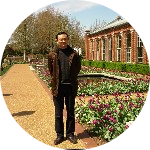About This Project
Food safety issues caused by heavy metal contamination is a global concern, but hyperaccumulating plants could be a solution. These plants have evolved strategies for extreme tolerance to heavy metal contamination, and can remove them from polluted soils. We want to study the genome of Sedum alfredii Hance, a perennial herb, that is known to extract cadmium, zinc, and lead from soils in China and it‘s an important issue around the world.
Ask the Scientists
Join The DiscussionWhat is the context of this research?
In China, more than 15,000 acres of soil have been polluted by metals, reducing food output by 12,000 tons and costing over 20 billion Chinese yuan in economic loss. Excess intake of Cd through the food chain can present a markedly negative impact on human and animal health, which is considered to be responsible for a variety of serious chronic diseases such as neurological disorders and cancers. Hyperaccumulating plants offer a potential bioremediation solution that is eco-friendly to help clean-up soils polluted with heavy metal. To develop plant-based solutions, this requires more genomic research and investment into understanding the molecular and genetic basis of how these plants are able to remove these metals from the soil.
What is the significance of this project?
Sedum alfredii could serve as an ideal plant model to investigate and identify the underlying molecular and physiological mechanisms of heavy metals hyperaccumulation. Once identified, we could explore engineering larger plants with these genes to more efficiently remove heavy metals from polluted soils. Through whole-genome sequencing and comparison of these two S. alfredii, we aim to uncover the important features of tolerance and metal accumulation. Once we identify the key genes responsible for these fascinating properties, it will help us breed new high accumulating trees that can remove heavy metal from soil. Our project could provide a much needed bioremediation solution for cleaning up heavy metals contaminated soil not only in China but also other parts of the world.
What are the goals of the project?
The goal of this project is to obtain two high-quality, complete genome sequences with PacBio’s newest SMRT Sequencing platform. Preliminary surveys have shown these to be small genomes, the genome size of the hyperaccumulating ecotype of Sedum alfredii is 189 megabase, and the non-accumulating species is 240 megabase. We want to improve the draft genomes that we have obtained with short-read technologies, which is too fragmented, making it difficult for a comparative study to identify our genes that could be responsible for tolerance and hyperaccumulation.
With the third generation sequencing technology, SMRT Sequencing, we will be able to obtain a more complete view of genes for both plants and, hopefully understand the genes and genomic features that can help advance our research
Budget
2 Plant genomes with SMRT Sequencing
2 Plant genomes = $10,000
With the third generation sequencing technology offered by PacBio (SMRT Sequencing), it is possible to obtain high quality, complete genomes necessary for this comparison to discover all genes in both plants and how they are arranged spatially. Having complete genomes will give us a complete view into the genomes of both plants. The small size of these plant genomes (189 Mb and 240 Mb) allows us to obtain two very high quality genomes with long-read sequencing within the scope of the “Explore Your Most Interesting Genome” SMRT Grant Program.
Endorsed by
Meet the Team
Affiliates
Team Bio
Hengfu YIN , Ph.D. Associate Professor, The Research Institute of Subtropical Forestry, Chinese Academy of Forestry;
Mingying LIU , Ph.D. Associate Professor, The Research Institute of Subtropical Forestry, Chinese Academy of Forestry;
Guirong QIAO , Associate Professor, The Research Institute of Subtropical Forestry, Chinese Academy of Forestry;
Xiaojiao HAN, Ph.D. Associate Professor, The Research Institute of Subtropical Forestry, Chinese Academy of Forestry;
Renying Zhou
Renying ZHUO
1991.9-1995.6 Lanzhou University, Plant physiology. Bachelor degree
1997.9-2002.6 Chinese Academy of Forestry, Tree genetics and breeding, Ph.D.
2002.6-2011.10 The Research Institute of Subtropical Forestry, Chinese Academy of Forestry, Associate Professor.
2011.10 to now, Research Institute of Subtropical Forestry, Chinese Academy of Forestry, Professor.
I am a professor at the Research Institute of Subtropical Forestry at the Chinese Academy of Forestry. My previous research is plant physiology on abiotic stress for my doctor’s degree. I’m very interested in plant stress physiology because it can help us understand how the plants respond to environmental stresses, and further identify some key genes involved in environmental stresses. Then, the key genes are used to breed new varieties of crops and trees, which will improve the quality of human being’s life and the environment. PacBio’s newest SMRT Sequencing platform help us deeply understand the genomic basis of hyperaccumulator plants resistant and absorb heavy metals. This project will fill the genome informations gaps of hyperaccumulator and Crassulaceae plants, and accelerate the new varieties breeding for crops and forest trees by gene transformation. It’s very important for soil phytoremediation in China and even all the world.
This is my group link:
http://www.risfcaf.com/cxtd/ShowArticle.asp?Articl...
Selected publications related to the project that my group published:
- Selection and Validation of Reference Genes for Quantitative Real-Time PCR in Hyperaccumulating Ecotype of Sedum alfredii under Different Heavy Metals Stress. PLoS One, 2013, DOI: 10.1371/journal.pone.0082927.
- Integration of Small RNAs, Degradome and Transcriptome Sequencing in Hyperaccumulator Sedum alfredii Uncovers a Complex Regulatory Network and Provides Insights into Cadmium Phytoremediation. Plant Biotechnology Journal, 2016, doi: 10.1111/pbi.12512.
Additional Information
We are the winning proposal for the 2016 “Explore Your Most Interesting Genome” SMRT Grant program. We thank Pacific Biosciences, Sage Science, Computomics, and RTL genomics for co-sponsoring this opportunity! Our project will be sequenced by RTL genomics with BluePippin size-selection SMRTbell libraries to acquire high-quality reference genomes. Computomics will be providing the genome assembly and bioinformatics analysis. Thank you to all our supporters for helping to champion this project.
Project Backers
- 2Backers
- 100%Funded
- $10,003Total Donations
- $2.50Average Donation

